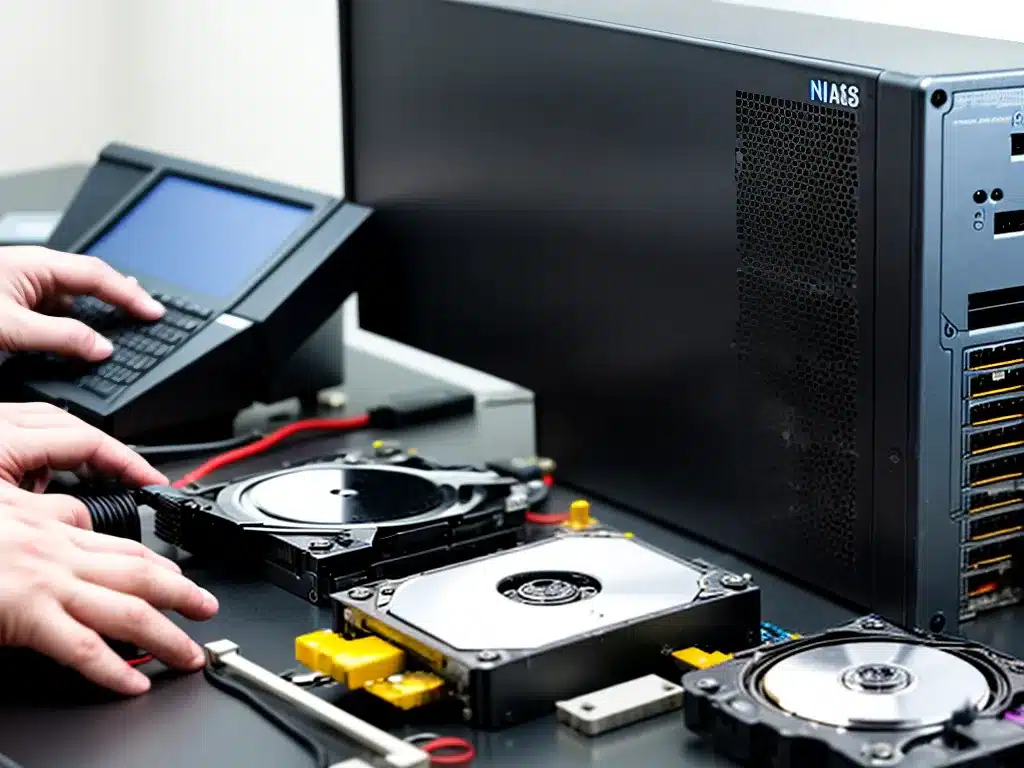
Introduction
Having a NAS (Network Attached Storage) device provides many benefits, such as centralized storage and easy access to files from multiple devices on your network. However, like any storage device, NAS devices can fail or become corrupted, resulting in potential data loss. When this happens, data recovery is required to restore access to your important files and folders.
In this article, I will provide an in-depth look at recovering data from NAS devices. I will cover the main causes of NAS data loss, the different data recovery options, best practices when attempting NAS data recovery yourself, and when to turn to a professional data recovery service. My goal is to equip you with the key information you need to successfully restore your data after a NAS failure.
Common Causes of Data Loss on NAS Devices
Before looking at how to recover data from a NAS, it’s important to understand what causes data loss in the first place. Here are some of the most common reasons you may need to rescue files from a damaged NAS:
Hardware Failures
Like any electronic device, the components within a NAS can fail. Hard drive crashes are a common hardware failure. The NAS motherboard, CPU, RAM, or other components can also malfunction. Physical damage is another possibility if the NAS is dropped or encounters another type of impact.
Logical Failures
Even with the hardware intact, the file system or operating system of the NAS can become corrupted. This prevents access to some or all data on the device. Firmware bugs or updates that go wrong can cause logical failures.
Accidental Deletion
Just as with a regular computer, files on a NAS may be accidentally deleted or overwritten by users. This user error results in data loss if proper backups were not maintained.
Malware or Ransomware
While less common, NAS devices can also fall victim to malicious programs like malware or ransomware. These attacks may damage files or encrypt data to extort money from the owner.
Power Loss
A sudden power outage or surge while the NAS is operating can lead to file system corruption. Unsafe shutdowns have a similar effect.
NAS Data Recovery Options
When data loss occurs on your NAS, there are a few different options to retrieve your files:
Restore from Backups
Ideally, you should have a current backup of your NAS data on another device. This gives you a simple way to restore your files should the active NAS fail. Maintaining regular backups is essential.
Use RAID Recovery
Many NAS devices support RAID storage configurations. Enabling RAID protects data by writing it across multiple drives. If one drive fails, the data on the other drives in the array can rebuild the lost data.
Attempt DIY Software Recovery
There are many do-it-yourself data recovery programs available online and from companies. With the NAS connected to another computer, this software scans the drives and attempts to rebuild directories and extract files. Success depends on the type of failure and extent of damage.
Professional Data Recovery Service
For complex NAS failures, or if DIY attempts are unsuccessful, a professional data recovery lab can disassemble the NAS and use specialized tools to manually extract the data. This is the most expensive option but offers the best chance of getting data back.
Best Practices for DIY NAS Data Recovery
If you decide to try NAS data recovery yourself before taking it to a professional lab, follow these best practices to avoid further data loss:
-
Stop using the NAS immediately once you notice data is corrupted or inaccessible. Continued use risks overwriting your files.
-
Connect the NAS drives to another computer with a SATA/USB adapter or by removing them from the NAS chassis. Do not try to recover data with the drives still in the NAS.
-
Scan drives read-only with recovery software to avoid changing data. Do not attempt to repair the file system or partition.
-
Recover data to another healthy drive, not back to the same NAS drive. This avoids overwriting good data.
-
Try multiple recovery tools if the first one fails, but avoid letting them all automatically repair the drive.
-
Prioritize recovering critical files first in case the process fails. Leave very damaged areas for the pros.
When to Use a Professional NAS Data Recovery Service
DIY NAS data recovery attempts don’t always succeed. Here are some signs it’s best to turn your NAS over to a professional service:
-
Physical damage like a dropped or water-damaged NAS.
-
You hear odd clicking or grinding noises from the NAS drives.
-
DIY software can’t access the drives or complete the recovery.
-
Critical RAID configurations are inaccessible.
-
Encrypted volumes are unreadable without the password.
-
Extremely large capacity NAS units with extensive data loss.
A professional service combines specialized data recovery hardware and advanced technical expertise to resuscitate NAS devices with severe failure or corruption. The cost is higher but can be worth it to reclaim irreplaceable data.
Conclusion
Suffering data loss on your NAS does not need to lead to catastrophe. Understanding the common causes of failure, smart DIY recovery attempts, reliance on backups, and using professional services when needed can help you successfully restore your data. Careful planning and preparation makes effective NAS data recovery more achievable.
The key takeaways are to maintain good backups, act quickly after data loss occurs, and know when to ask for professional assistance. With the right approach, you can rescue your files and get your NAS fully functional again. Just be sure to follow best practices throughout the process.












